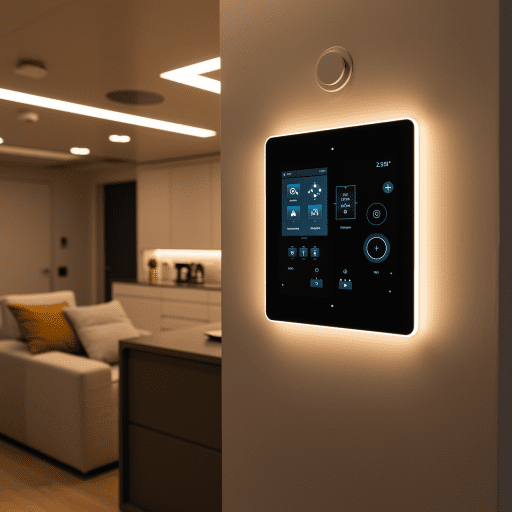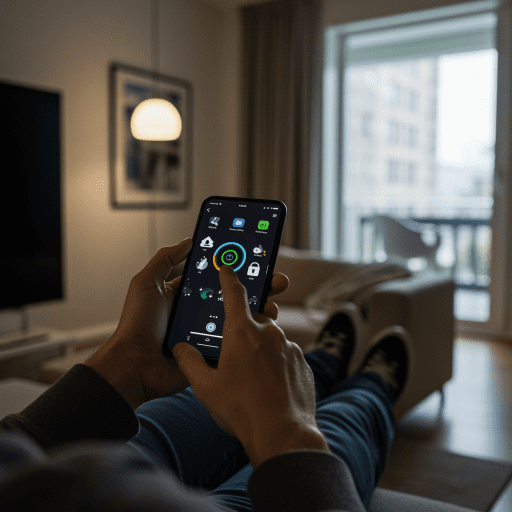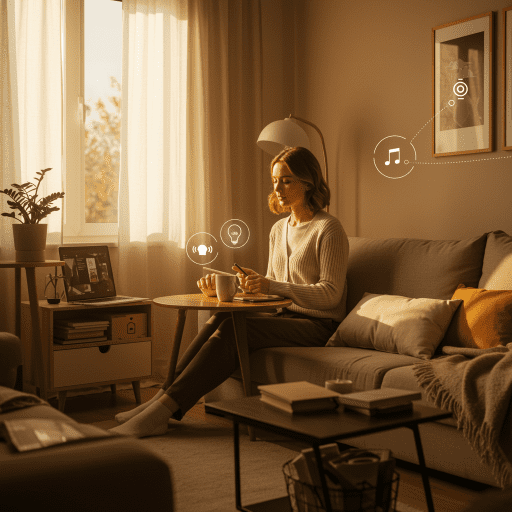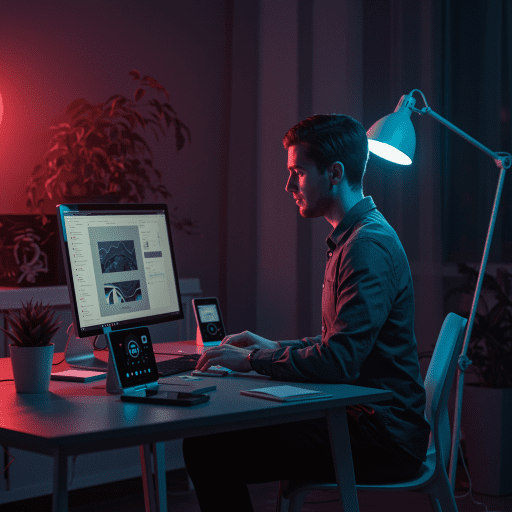The Future of Interior Design: Trends to Watch
Interior design is undergoing a revolutionary transformation, driven by technological advances, environmental consciousness, and evolving lifestyle needs. As we look ahead, the intersection of wellness, sustainability, and smart technology is reshaping how we conceive and create living spaces. According to a 2023 report by the American Society of Interior Designers (ASID) , 78% of clients reported higher satisfaction when wellness-focused design elements, such as improved air quality, natural light, and biophilic features, were integrated into their spaces. This signals a fundamental shift in how we approach interior spaces, prioritizing health, well-being, and functionality.

The Rise of Smart Home Integration
The integration of smart technology into interior design has moved from luxury to necessity. According to a 2023 report by MarketsandMarkets , the global smart home market is expected to grow from $84.5 billion in 2020 to $192 billion by 2026, driven by advancements in IoT, energy management systems, and smart appliances. This growth is fundamentally changing how we interact with our living spaces, making smart technology an integral part of modern interior design.
AI-Powered Design Solutions
Research demonstrates that AI-powered design platforms are revolutionizing the design process. According to a 2023 report by McKinsey & Company , AI-driven design tools have improved personalization accuracy by up to 85%, enabling designers to create tailored solutions that better align with individual preferences. This technology is transforming space planning, making it more personalized and efficient while reducing costly mistakes.
Similarly, virtual reality tools have proven particularly effective in enhancing design precision. A 2023 study by PwC found that the use of virtual reality in design processes reduced errors and rework by 35%, leading to significant cost savings and improved project outcomes. Together, these advancements are reshaping how designers conceptualize and execute interior spaces.
Connected Living Spaces
A compelling example of successful smart integration comes from recent industry reports. According to a 2023 report by RentCafe , smart-enabled apartments in urban areas leased 28% faster than non-smart units, driven by growing tenant demand for connected living spaces. Additionally, a 2023 study by JLL (Jones Lang LaSalle) found that properties with integrated smart home features experienced a 22% increase in tenant retention rates compared to traditional properties. These spaces often feature voice-controlled lighting, automated climate control, and integrated security systems, creating a seamless living experience that modern residents increasingly expect.

Wellness-Centric Design: The New Priority
The pandemic has accelerated the trend toward wellness-focused spaces, with HGTV reporting a significant surge in demand for designs that promote both physical and mental health.
Biophilic Design Integration
Research highlights the profound benefits of incorporating natural elements into interior spaces. According to a 2022 study published in the Journal of Environmental Psychology , integrating features like plants and natural light reduces stress levels by up to 27% and improves cognitive performance by 14%. These findings are exemplified in workplaces adopting biophilic design principles. For instance, a 2023 report by Human Spaces , a global research initiative, found that workplaces incorporating biophilic elements such as green walls and natural wood finishes experienced an 18% increase in employee engagement and a 15% boost in productivity. This underscores the growing importance of designing spaces that connect occupants with nature.
Meditation and Wellness Zones
A San Francisco tech company's office redesign demonstrates the impact of dedicated wellness spaces. By incorporating air-purifying plants, ergonomic furniture, and meditation pods, they achieved significant improvements in workplace well-being. According to a 2023 report by the World Green Building Council , workplaces that incorporate wellness-focused design elements have seen an average 20% increase in employee productivity. Additionally, a 2022 study published in the International Journal of Environmental Research and Public Health found that dedicated meditation and wellness zones reduced self-reported stress levels by up to 30% among employees. These findings underscore the growing importance of designing spaces that prioritize mental health and overall well-being.

Sustainable Design: More Than a Trend
Sustainability has evolved from a nice-to-have feature to a core design principle. According to a 2023 survey by the National Association of Home Builders (NAHB) , 82% of homebuyers are more likely to purchase a home with energy-efficient and sustainable features, even if it comes at a higher price point. This shift underscores the growing importance of integrating eco-friendly elements into interior and architectural design.
Eco-Friendly Materials and Circular Design
Research highlights the growing value of sustainable design in the built environment. According to a report by the U.S. Green Building Council (USGBC), green-certified buildings can achieve up to 7% higher asset value compared to non-certified buildings. Additionally, properties with green certifications, such as LEED (Leadership in Energy and Environmental Design), often experience higher occupancy rates and rental premiums due to increasing demand for sustainable spaces. This premium reflects growing environmental consciousness among consumers and the tangible benefits of sustainable design choices.
Space Optimization
The tiny house movement exemplifies innovative approaches to sustainable living. A 2021 survey by the National Association of Home Builders (NAHB) found that 56% of millennials expressed interest in smaller, more energy-efficient homes due to their affordability and reduced environmental impact. With the tiny house market projected to grow at a CAGR of 4.8% from 2023 to 2030 , there is clear evidence of strong demand for compact, eco-friendly homes with modular designs and space-saving features like foldable furniture. These trends highlight the appeal of minimalist, sustainable living options among environmentally conscious consumers.

Looking Ahead: 2025 and Beyond
Industry forecasts indicate that biophilic design is set to become one of the top three trends in residential architecture by 2025, according to the International Living Future Institute (ILFI). With studies showing that incorporating natural elements into interior spaces can enhance occupant satisfaction by up to 15% and reduce stress levels significantly, there is clear evidence of growing demand for healthier living environments. The future of interior design will be characterized by:
- Seamless integration of smart technology with sustainable materials
- Increased focus on adaptable, multifunctional spaces
- Greater emphasis on wellness-promoting features
- Advanced personalization through AI and VR technologies

Impact on Hospitality and Commercial Spaces
The transformation extends beyond residential design. A 2021 study by Hospitality Net revealed that hotels incorporating biophilic design elements , such as natural materials and greenery, reported up to a 20% increase in guest satisfaction scores and a 15% rise in repeat bookings . Additionally, properties integrating smart technology, such as personalized room controls and energy-efficient systems, saw a 10-15% increase in booking rates due to enhanced guest experiences. These findings demonstrate the commercial value of modern design principles in creating memorable, sustainable, and tech-enabled hospitality environments.
